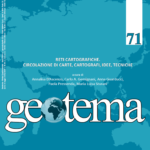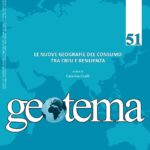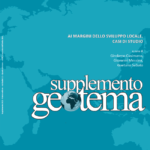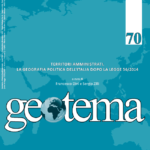Alessandro Arangio
Resistenze e trasformazioni territoriali indotte dal fenomeno migratorio nella Sicilia ibleo-mediterranea
La Sicilia ibleo-mediterranea, un territorio costiero a cavallo fra le province di Siracusa e Ragusa, è la principale area d’immigrazione dell’isola. Il motore che ha spinto flussi migratori, in costante crescita dai primi anni Ottanta del XX secolo, verso questa regione è stato la serricoltura. Le produzioni di ortaggi, fiori e soprattutto pomodori in coltura protetta hanno generato benessere e creato lavoro: solo nell’area ragusana sono presenti oltre 3.000 aziende agricole e le serre occupano una superficie superiore ai 6.000 ettari. La forza lavoro immigrata costituisce il 50% degli addetti del comparto. La tesi presentata in questo studio è che lo sfruttamento della manodopera straniera, attraverso forme di economia informale, ha permesso alla Sicilia ibleo-mediterranea di attutire gli effetti negativi della crisi internazionale meglio che in altre parti dell’isola. Allo stesso tempo, l’obiettivo del presente lavoro è quello di indagare le trasformazioni e le resistenze in atto nel territorio, correlate alla presenza immigrata.
Abstract: Territorial Resistances and Transformations Induced by the Migration Phenomenon in Hybleo-Mediterranean Sicily
Hybleo-Mediterranean Sicily, a coastal region between the provinces of Syracuse and Ragusa, is the main immigration area of the island. The engine that has driven migratory flows, constantly growing since the early 80s of the 20th century, was the greenhouse industry. The production of vegetables, flowers and above all tomatoes in protected crops have generated wealth and created work. Only in the Ragusa area there are over 3,000 farms and the greenhouses occupy a surface area of more than 6,000 hectares. Today immigrants make up about 50% of all employees in the sector. The thesis presented in this study is that the exploitation of foreign labour, through forms of informal economy, has allowed Hybleo-Mediterranean Sicily to cushion the negative effects of the international crisis better than in other parts of the island. At the same time, the objective of this work is also to investigate the transformations and resistances taking place in the region, related to the immigrant presence.
Résumé: Résistances et transformations territoriales induites par le phénomène migratoire dans la Sicile hybléo-méditerranéenne
La Sicile hybléo-méditerranéenne, une région côtière située entre les provinces de Syracuse et Raguse, est la principale zone d’immigration de l’île. L’industrie de la serre a été le moteur des flux migratoires, en croissance constante depuis le début des années 80 du 20ème Siècle. La production de légumes, de fleurs et surtout de tomates dans les cultures protégées a généré de la richesse et créé du travail. Dans la région de Ragusa, il y a plus de 3 000 fermes et les serres occupent une superficie de plus de 6 000 hectares. Aujourd’hui, les immigrants représentent environ 50% de tous les employés du secteur. La thèse présentée dans cette étude est que l’exploitation de la main-d’oeuvre étrangère, à travers des formes d’économie informelle, a permis à la Sicile hybléo-méditerranéenne de mieux amortir les effets négatifs de la crise internationale que dans d’autres parties de l’île. Parallèlement, l’objectif de ce travail est également d’étudier les transformations et les résistances en cours dans la région, liées à la présence des immigrants.
Parole chiave: immigrazione, serricoltura, Sicilia
Keywords: immigration, greenhouse crops, Sicily
Mots-clés: immigration, cultures de serre, Sicile









